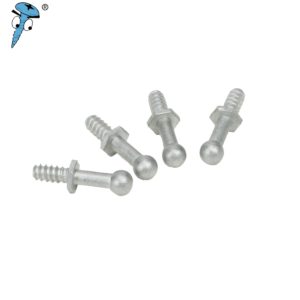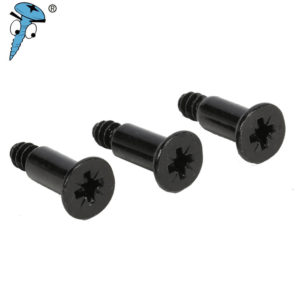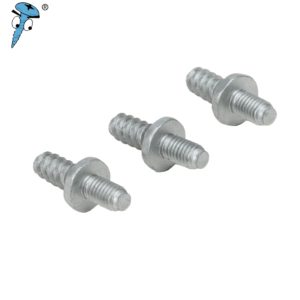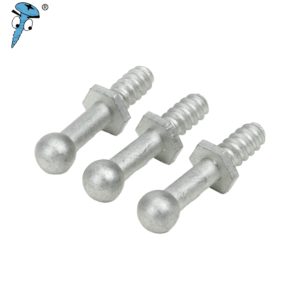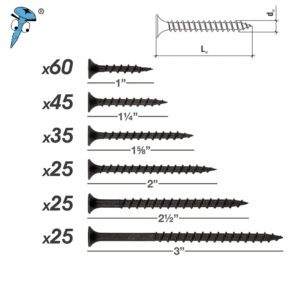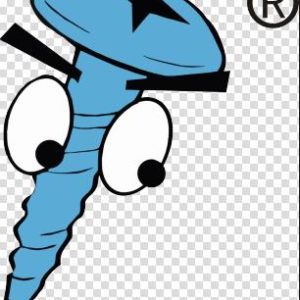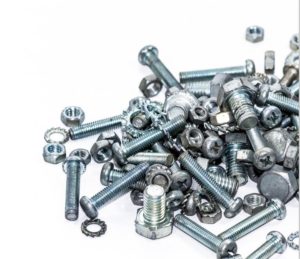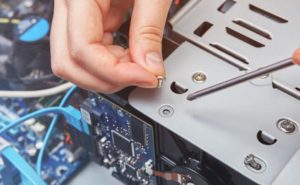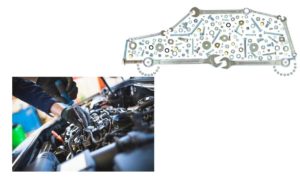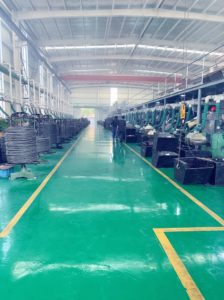Common Problems Faced in Nuts Production Processes
Nuts, bolts, and screws are usually produced in large batches, which requires high-speed production cycles, with occasional problems or failures in the process.
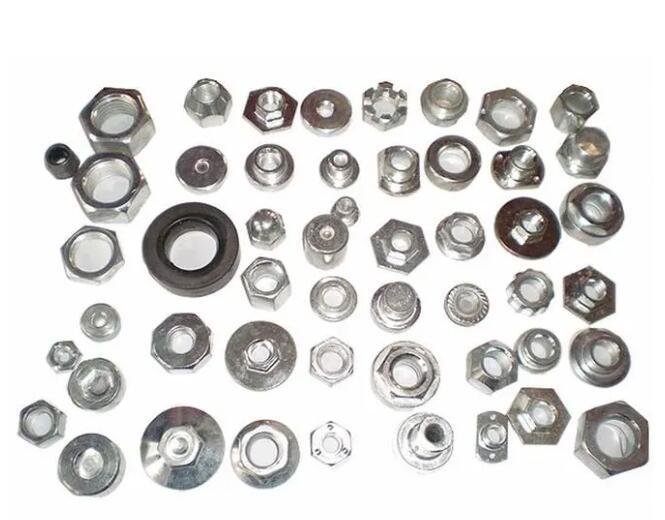
01 What is unique factors about nuts production?
Like fasteners such as screws and bolts, Nuts are usually mass-produced products. Therefore, the predominant method of making them starts from cold-formed blanks.
However, small or large size nuts are usually hot-forged or machined.
Due to space limitations. We will discuss mainly cold forming manufacturing methods.
Significant differences between nut and screw and bolt products:
• First, the nut’s aspect ratio (or relationship between height and thickness) is always very “short and fat.” This geometry is very different from the “long and thin” of screws and bolts. This means we cannot use the same cold-forming machines. Nut cold heading machines are generally faster, more flexible, and multi-station forming. Typically designed for short strokes, they do not require long pants to be pushed out of the die.
• Second, the nut has a hollow blank or through-hole feature. Although nut designs can incorporate all cold heading processes: upsetting, forward extrusion, reverse extrusion, and shearing. Most standard nuts rely heavily or entirely on the back extrusion process, which is a very different forming process than bolts and screws.
• Third, based on the features of reverse extrusion and through holes, the machine needs to have the ability to turn the part from one side of the die, so nut forming machines are usually equipped with transfer devices instead of bolt-to-station moving devices. The transfer device enables the part to be turned between stations to present the ends alternately to the punch and die.
• Finally, the material must be pierced to achieve the through-hole for nut through holes. The material is pierced through the punch then brought onto the pin to exit the machine.
Nut threads are also machined differently than screws and bolts. Threading can be done by inserting the tap tooling into the nut blank or bypassing the nut blank through the tap.
Tapping can be cut or cold-formed.
The locking design of the nut is fundamentally different from that of externally threaded fasteners.
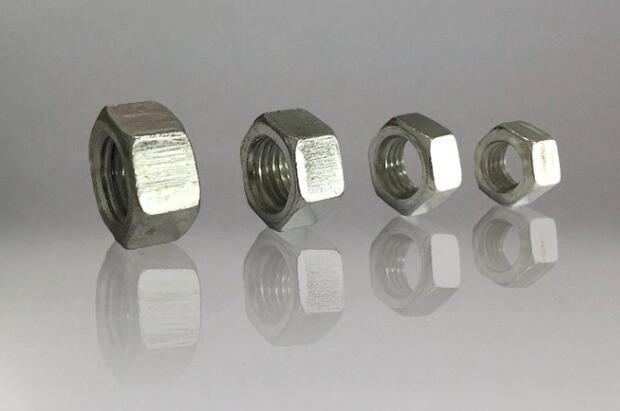
Most lock nuts use one of three different methods: side locking, top locking, or insert locking.
02 What are the common problems encountered in the production of nuts?
Most of the problems are operators not properly tuning the machine to produce parts successfully.
These problems can arise from several potential causes, including engineering design, operational errors, tooling dimensions, and tooling materials.
1. Engineering design: The production of nuts is a multi-step gradual process, and the engineer must know what changes are done in each step.
If the steps are not done correctly, or production operations are exceeded, problems can ensue.
2. Operation error: There are many possibilities for operator error. The operator may be inexperienced or just out of luck.
One way to help solve this problem is to add a process control plan to the work instruction, often requested by many customers.
They can provide the operator with a powerful tool in detail to help get the commissioning right the first time.
3. Tooling size: The tooling is made incorrectly, or the operator has made a wrong modification so that it can no longer produce parts as required.
For new tooling, it is required to have a test certificate, or the supplier can provide long-term technical services. Developing and maintaining good tooling suppliers is the key to problem-free manufacturing.
Additionally, tooling is often “fine-tuned” to make them work the way the manufacturer wants them. That “fine-tuned” tooling that worked fine on one batch of wire might not work on the next.
Operators or tool room personnel should document changes made to tooling so that they can be easily and quickly eliminated during troubleshooting.
4. Tooling material: When the performance of the tooling material is unqualified, or when other materials are used instead, it will often lead to problems.
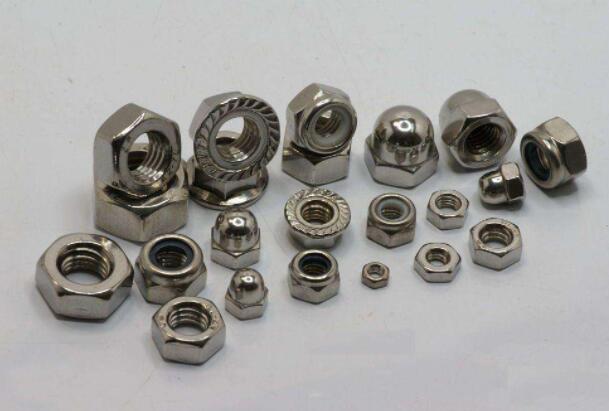
In particular, the current epidemic has caused material shortages, and some manufacturers are forced to use alternative materials, which will cause some serious industry problems.
03 Shifting the device will it cause manufacturing issues?
The transfer unit of all cold heading machines performs critical and complex tasks.
This transfer device is more stable than other types of transfer devices. Once debugged correctly, work can be done quickly.
The operator must adjust the transfer device to grab and hold the workpiece at the right time, not drop the part while transferring, and release it at the right time. This is a complex “feature” that requires some experience from the operator or setup person to implement.
04 Will too many machine brands cause problems?
The answer is not sure.
Because having multiple different equipment brands means having their tooling and spare maintenance parts.
As an engineer, operator, or equipment repairer, you must be trained to master various machine principles and operations.
Therefore, having all one equipment brand is advantageous, greatly simplifying personnel training and equipment maintenance.
However, this may not work for all nut manufacturers as they need machines with different capabilities to supply different products.
So having a wide range of machine brands is not a problem if managed properly.
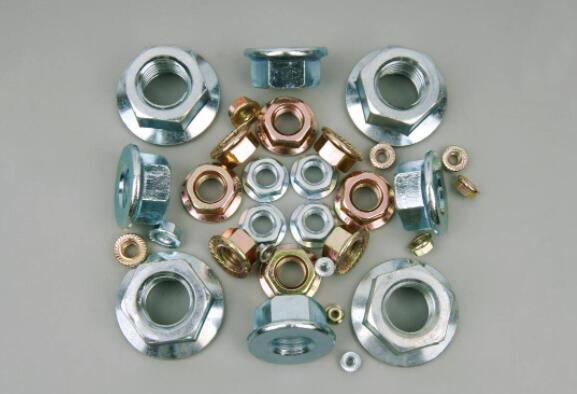
05 Some Frequently Asked Questions about Lock Nuts
Understand that what we call a “lock nut” is usually not permanently locked to a screw or bolt.
These products are more often classified as Prevailing Torque nuts. They create some additional snag or friction to stop the nut from being more difficult to come off.
There are three main types of nuts: side lock, top lock, and top insert lock.
All three rely on mechanical features or inserts to provide locking.
The problem often occurs: the locking torque variable is large, and it will be difficult to distinguish the difference from the ordinary nut if it is too small; if it is too large, it will have a certain impact on the assembly.
Metal lock nut problems are usually caused by insufficient mechanical feed, insufficient mechanical pressure, or damaged tooling. Top insert locking issues Often, the top is not properly compressed, causing the insert to fall off,
Additionally, most inserts are nylon materials, which are hygroscopic and can absorb moisture from the surrounding atmosphere, which can impact manufacturing.
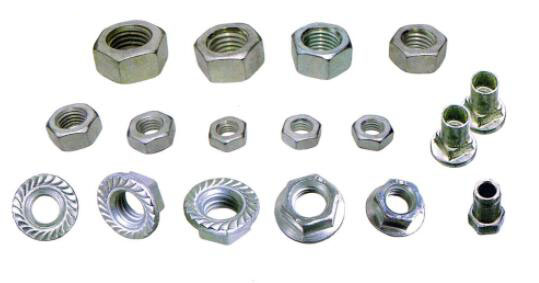
06 What are the common problems when tapping?
• Chips and debris in threads;
• Broken taps (especially blind hole nuts);
• Excessive tap wear, resulting in round, chipped, and undersized threads;
• Improper feed.
All manufacturing problems should have solutions.
If these problems are chronic for the manufacturer, continuous improvements should be made to reduce or eliminate the problems.


